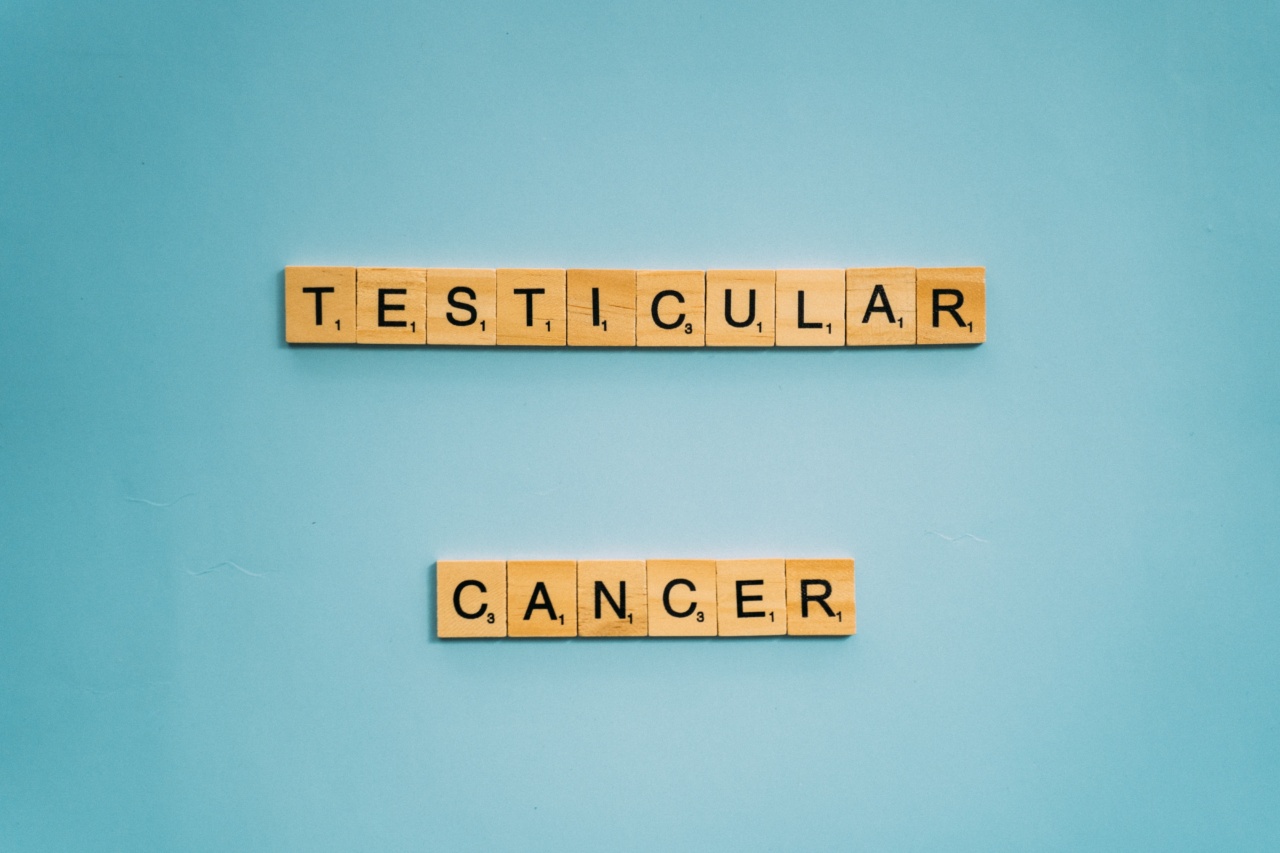Testicular atrophy refers to the shrinking of the testicles, often resulting in a reduction in the production of testosterone and sperm.
This condition can occur due to various factors, including hormonal imbalances, testicular trauma or injury, infections, and certain medical conditions. Testicular atrophy can have implications for fertility and overall health. Fortunately, there are several treatment options available to manage this condition and improve testicular function.
In this article, we will explore some of the common treatments for testicular atrophy.
1. Hormone Replacement Therapy (HRT)
Hormone replacement therapy involves the administration of synthetic hormones to replenish testosterone levels in the body. This treatment can be beneficial for individuals with testicular atrophy caused by low testosterone levels.
HRT can help improve symptoms related to hormone imbalance, such as reduced libido, fatigue, and depression.
2. Surgical Interventions
In some cases, surgical interventions may be necessary to treat testicular atrophy. One common surgical procedure is testicular prosthesis, where an artificial testicle is inserted to restore the size and shape of the testicle.
This procedure is often performed for cosmetic reasons, as well as to improve self-esteem and body image.
3. Varicocele Repair
A varicocele is a condition characterized by enlarged veins within the scrotum, which can contribute to testicular atrophy. Varicocele repair is a surgical procedure that involves tying off or sealing the affected veins.
This treatment can help improve blood flow to the testicles and mitigate the shrinkage caused by varicoceles.
4. Medications
Medications can be prescribed to address underlying conditions or factors contributing to testicular atrophy. For example, if the condition is caused by an infection, antibiotics may be prescribed to eliminate the infection and prevent further damage.
Similarly, if the cause is an autoimmune disorder, immunosuppressive drugs may be used to manage the condition and reduce testicular damage.
5. Lifestyle Modifications
Adopting certain lifestyle modifications can also alleviate testicular atrophy symptoms and promote testicular health. These modifications include:.
a. Exercise: Engaging in regular physical activity can help improve blood circulation to the testicles and promote overall wellness.
b. Healthy diet: Consuming a balanced diet rich in essential nutrients, vitamins, and minerals is crucial for testicular health.
This includes foods that boost testosterone production, such as lean proteins, fruits, vegetables, and whole grains.
c. Avoiding excessive heat: Prolonged exposure to high temperatures, such as hot tubs or saunas, can negatively impact testicular function. It is advisable to limit exposure to such sources of heat.
d. Stress management: Chronic stress can disrupt hormonal balance and contribute to testicular atrophy. Practicing stress management techniques like meditation, yoga, and deep breathing exercises can be beneficial.
6. Assisted Reproductive Techniques
For individuals experiencing testicular atrophy-related fertility issues, assisted reproductive techniques can offer viable solutions.
These techniques include in-vitro fertilization (IVF), intracytoplasmic sperm injection (ICSI), or sperm retrieval followed by intrauterine insemination (IUI). Consulting a fertility specialist can help determine the most suitable option based on individual circumstances.
7. Regular Testicular Self-Exams
Regular testicular self-exams are essential to detect any changes in testicular size or abnormalities promptly. Being familiar with the normal size and shape of the testicles can help identify potential concerns and seek medical attention early on.
8. Psychological Support
The impact of testicular atrophy extends beyond physical symptoms and can affect emotional well-being.
Seeking psychological support, such as therapy or counseling, can help individuals cope with any emotional distress or body image issues associated with this condition.
9. Ectopic Testis Surgical Relocation
In some cases where the testicles are not located within the scrotum, a surgical procedure called orchidopexy may be performed to relocate the testicles. This procedure aims to improve testicular function and potentially reverse atrophy.
10. Management of Underlying Conditions
Addressing and managing any underlying medical conditions that contribute to testicular atrophy is crucial. This may involve treating infections, managing hormonal imbalances, or controlling autoimmune disorders.


























